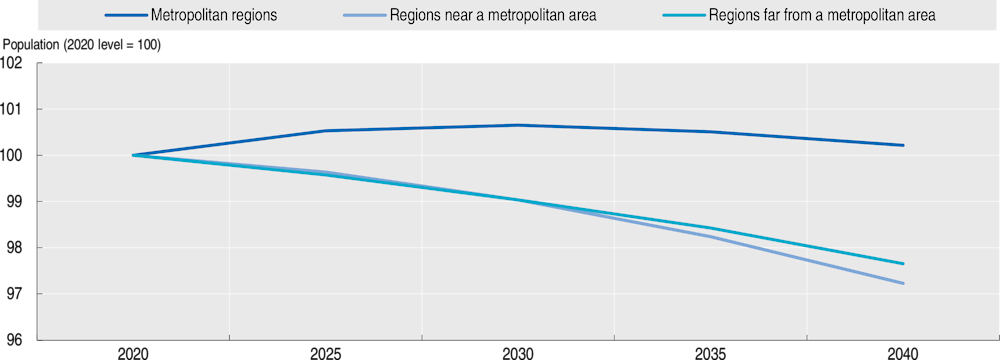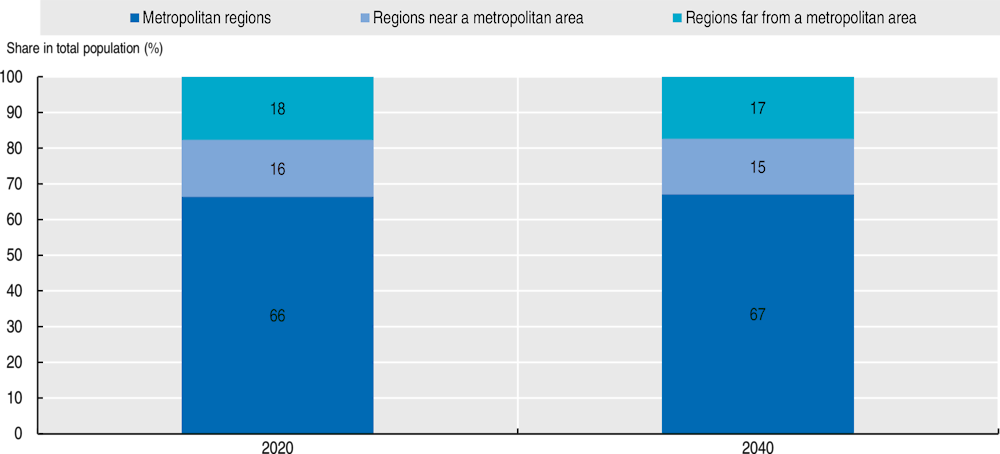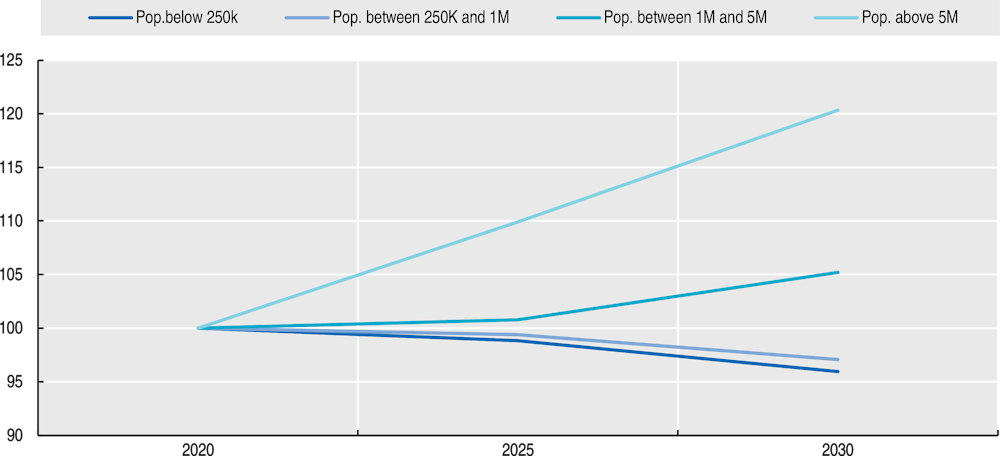Populations will continue to concentrate in metropolitan areas.
In the past decades, the population in OECD countries has slowly gravitated towards large, densely populated regions and cities. This trend is consistent with the evidence that, as countries develop, they have larger shares of the urban population (OECD/European Commission, 2020). The existing literature points to different reasons for the increasing geographic concentration of people, from the economic advantages of agglomeration – including economic opportunities and amenities (Combes and Gobillon, 2015) – to geographical factors such as rivers or access to the sea (Nieves et al., 2017). Today, cities house almost half of the OECD population while this share is even larger when accounting for commuting areas surrounding cities.
The spatial concentration of the population in metropolitan regions is expected to continue in the next two decades. According to the available population projections for 27 OECD countries, the population living in metropolitan regions is expected to remain roughly unchanged, while the population in regions near a metropolitan area and those far from a metropolitan area are expected to shrink by 2.8% and 2.3% respectively (Figure 3.4). As a consequence, while the share of the population living in metropolitan regions is expected to slightly increase from 66% to 67% by 2040, the population shares of regions near a metropolitan area are expected to decline from 16% to 15% and from 18% to 17% for regions far from a metropolitan area (Figure 3.5).
An increasing share of the OECD population will move into large cities and their commuting zones (functional urban areas, FUAs). Based on population projections made by the European Union (EU) (Schiavina, Freire and MacManus, 2022), between 2020 and 2030, the OECD population living in FUAs will increase from 950 million to 1 billion inhabitants (Figure 3.6). The population is expected to increase in larger FUAs with more than 1 million inhabitants, while the population in smaller FUAs is expected to shrink. The population living in FUAs with a population of less than 250 000 inhabitants or between 250 000 and one million inhabitants are expected to shrink by 4% and 3% respectively. In contrast, the population living in FUAs with a population of between 1 and 5 million inhabitants is projected to grow by around 5% by 2030, relative to the population levels in 2020. FUAs with a population of above 5 million inhabitants will experience the fastest growth. The population living in these large FUAs is projected to grow by 20%.



